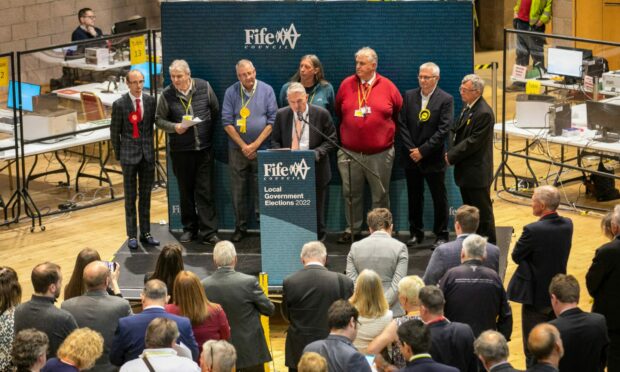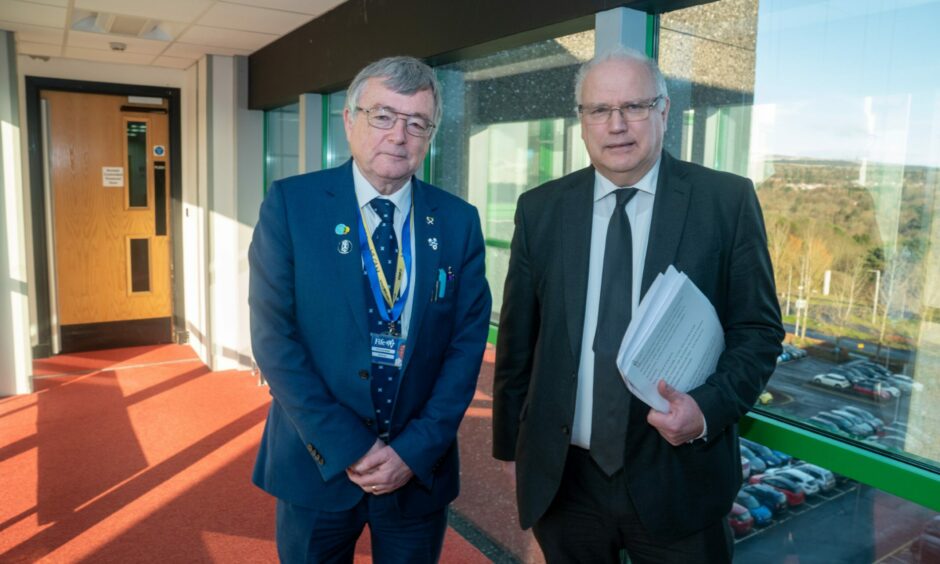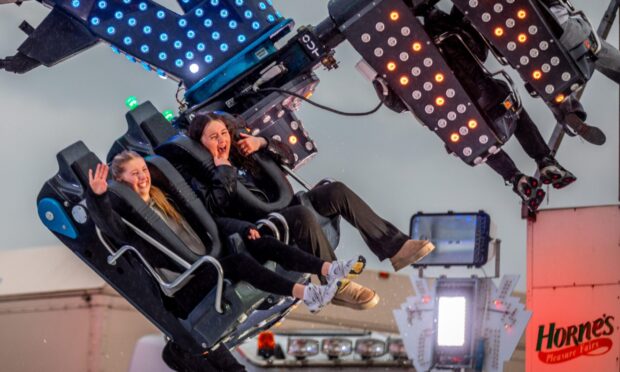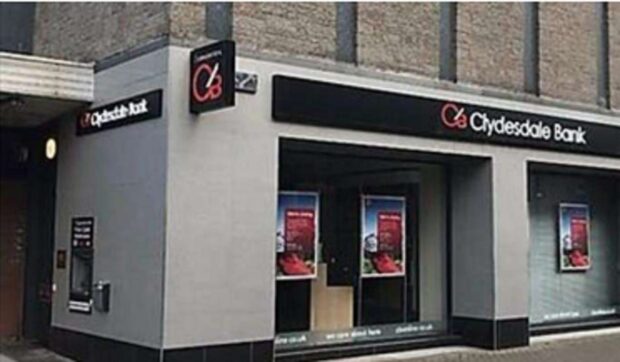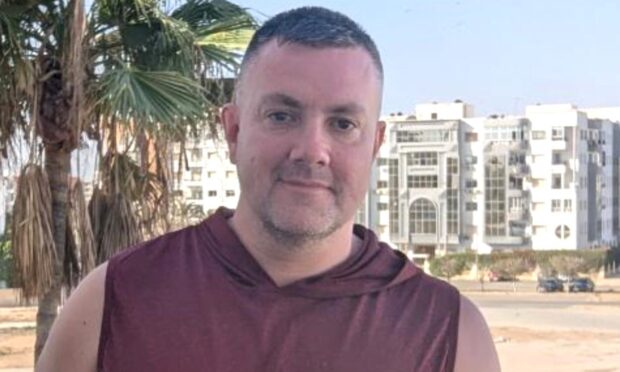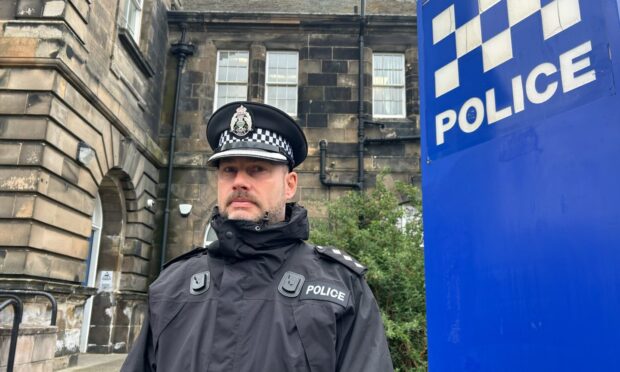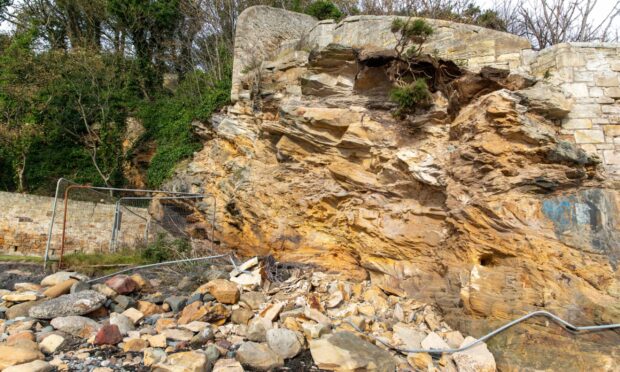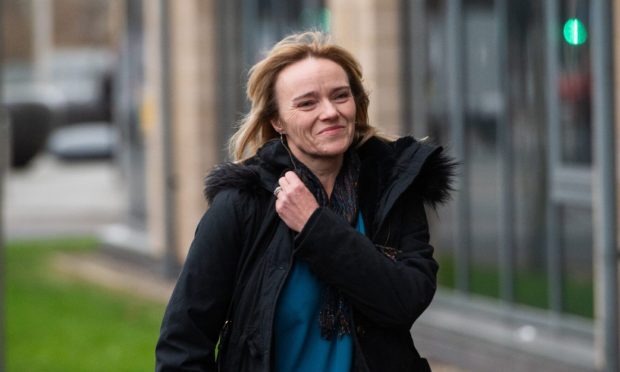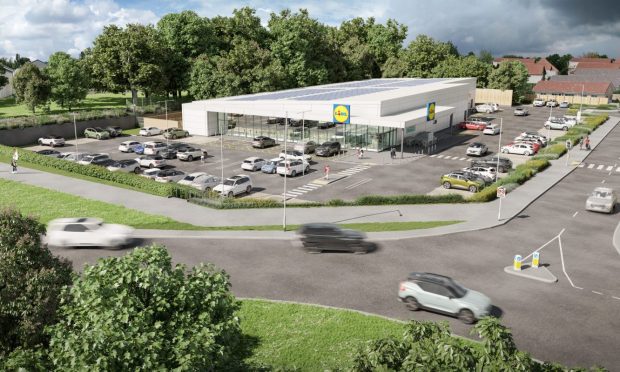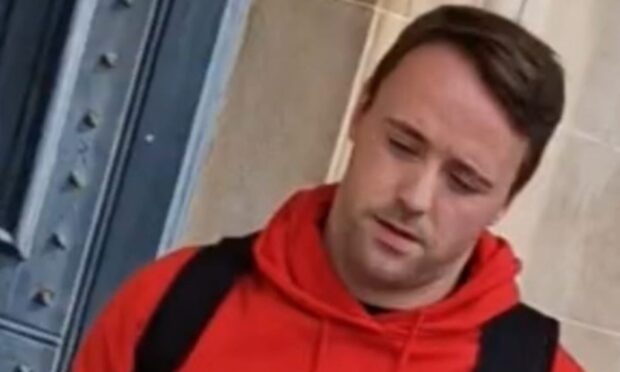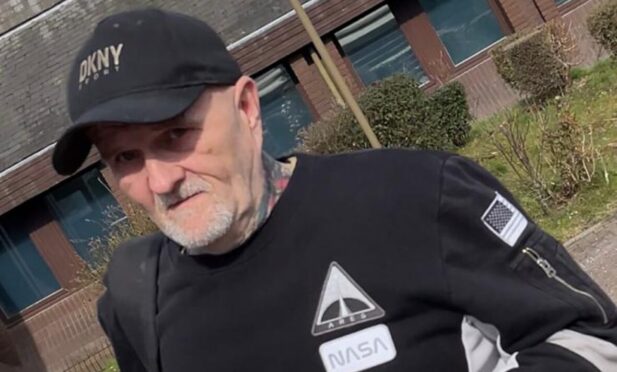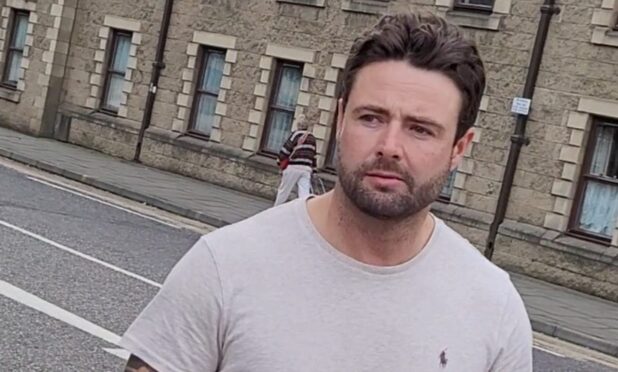The SNP is heading towards forming a Fife Council administration as talks over a possible coalition begin.
The party hailed its “best ever result” following Thursday’s election, securing 34 of the authority’s 75 seats.
But it fell four short of an overall majority and leader David Alexander is keen to reach an agreement with another party.
Labour has ruled out a formal coalition with the SNP, meaning the power-sharing agreement formed in 2017 is over.
And the Nationalists are refusing to enter discussions with the Conservatives.
Therefore, if there is to be any agreement at all, the most likely scenario is an SNP-Liberal Democrat coalition.
‘No prospect’ of SNP-Labour coalition
But party leaders say talks are ongoing and it’s too early to make any announcement.
Mr Alexander said: “It was an amazing result for us but it’s early days.
“We’re speaking to people – yesterday we spoke to Labour and the Lib Dems.
“There’s no way we’ll speak to the Tories.
“That’s about as much as I can say at the moment.”
Meanwhile Labour leader David Ross is still assessing the result.
The party finished with 20 councillors, a loss of four.
He said: “We’ve made it clear we won’t go into any formal coalition with anybody, certainly not the SNP or the Tories.
“I had a chat with David Alexander yesterday. I don’t think there’s any prospect at all of us doing anything directly with them.”
The Liberal Democrats are keeping their options open, however.
Taybridgehead councillor Jonny Tepp, who is leading the party’s talks, said: “We’re happy to talk to people and that’s what we’re doing.”
The first full Fife Council meeting of the new term is on May 19 and it is hoped an agreement will be in place by then.
Fife Council: The numbers game
Fife Council is the third largest local authority in Scotland with 75 councillors.
It means any one party would need 38 councillors to form an administration on its own.
As it stands, the SNP has 34, Labour has 20, the Liberal Democrats 13 and the Conservatives eight.
There are no members from other parties and no independents.
It means the SNP could form an agreement with any one of the other parties to take power.
However, if it fails to reach a consensus, Labour would have to join forces with both the Lib Dems AND the Tories to form the largest group.
Given Mr Ross’s comments, the latter scenario is highly unlikely.
Alternatively, the SNP, as the biggest party, could attempt to form a minority administration, although Mr Alexander has already dismissed that as “unhealthy”.
Another possibility is Labour and the Lib Dems forming a pact, which could work if the SNP and Conservatives refuse to co-operate.
An SNP- Lib Dem coalition in 2007 ended decades of Labour rule in Fife.
That was despite Labour being the biggest party.
However, Labour regained power on its own at the next election before reaching an agreement with the SNP in 2017.
